ASUS TUF Gaming GeForce RTX 4090 OC Edition Key Features and Specifications
Just to make it a bit easier, here are the key features and specs for the TUF Gaming GeForce RTX 4090 OC Edition:
Key features
- NVIDIA Ada Lovelace Architecture
- NVIDIA GeForce RTX 4090 OC Edition 24GB GDDR6X with DLSS 3
- 4th Generation Tensor Cores
- 3rd Generation RT Cores
- OC mode: Boost clock 2595 MHz (OC mode)/ 2565 MHz (Gaming mode)
- Axial-tech fans scaled up for 23% more airflow
- Dual Ball Fan Bearings last up to twice as long as conventional designs
- Military-grade Capacitors rated for 20K hours at 105C make the GPU power rail more durable
- Metal Exoskeleton adds structural rigidity and vents to increase heat dissipation
Auto-Extreme precision automated manufacturing for higher reliability - GPU Tweak III software provides intuitive performance tweaking, thermal controls, and system monitoring
Specifications
- Graphics Coprocessor: NVIDIA GeForce RTX 4090 (AD102)
- Graphics RAM Size: 24 GB GDDR6X
- Graphics RAM: GDDR6X
- Hardware Interface: PCIe x16 Gen4
- Included Components: ROG-STRIX-RTX4090-O24G-GAMING, Collection card, Speedsetup Manual, Adapter Cable, ROG Graphics card holder, ROG Velcro Hook & Loop, Thank you card
- Dimensions: 348.2 x 150 x 72.6 mm (13.7″ x 5.9″ x 2.85″)
- Memory Bus Width: 384-bits
- Egine Clock Boost: 2595 MHz (Reference: 2520 MHz)
- Recommended Power Supply: 850W
- PCI Express: 4.0
- Display Outputs: 3x DisplayPort 1.4a
2x HDMI 2.1
Our test setup
Our workstation has been used for many of our reviews and is our current test setup.
- Motherboard: ASUS ROG Maximus Z690 Hero
- CPU: Intel Core i9-12900K (8x Performance Cores / 8x Efficient Cores – 16x Threads)
- RAM: 2x Sticks – 64GB DDR5 5,200 MHz
- CPU Cooling: EK Water Cooling
- Storage: OS Gen 4 4TB, two other 8TB SSDs for storage
- OS: Windows 11 Pro fully updated
- Case: Open Bench Table
We will use Benchmate to see a read-out of the test system.
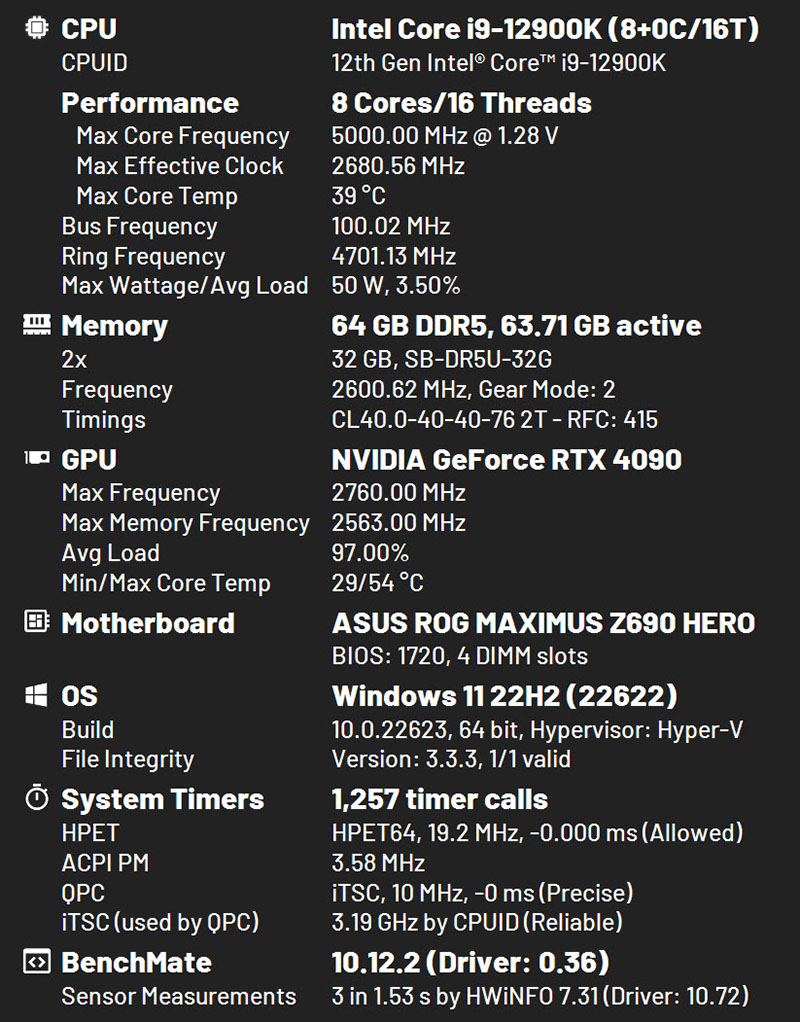
Just to note our testbed configuration. In normal everyday use, we have a HighPoint RAID card that holds 8x SSDs that we want to use. We had no choice but to install this card in PCIe slot 1 and the ASUS ROG Strix 4090 OC in PCIe slot 2. Doing this dropped the ASUS ROG Strix 4090 OC to PCIe X16 4.0 @ x8. We hardly notice any difference in benchmark runs in this configuration, and it works just fine on our large Samsung NEO G9. For testing in this review, we removed the HighPoint RAID card and installed the ASUS ROG Strix 4090 OC in PCIe slot 1.
Before we started using the ASUS ROG Strix 4090 OC, we had an ASUS ROG Strix 3090 Ti which left us plenty of space after installing it in slot 1 to use the Highpoint card in slot 2. We also had a SoundBlaster card in the 3rd slot, but we moved to a Sound Blaster X4 USB sound setup, which works very well for our needs. That is one of the biggest challenges with the RTX 4090. Trade-offs may need to be made on the rest of the system with an air-cooled RTX 4090.
ASUS TUF Gaming GeForce RTX 4090 OC Edition Application Software
The application software that comes with the ASUS TUF 4090 OC is GPU Tweak III which enables one to click OC on the card or drop it down to silent mode. You can control fan speeds and a whole host of other options. If one wants to control the RGB aspect, then one needs to install Armoury Crate, which also handles updates and many other features related to ASUS products.
Here we see what the GPU Tweak III screen looks like.
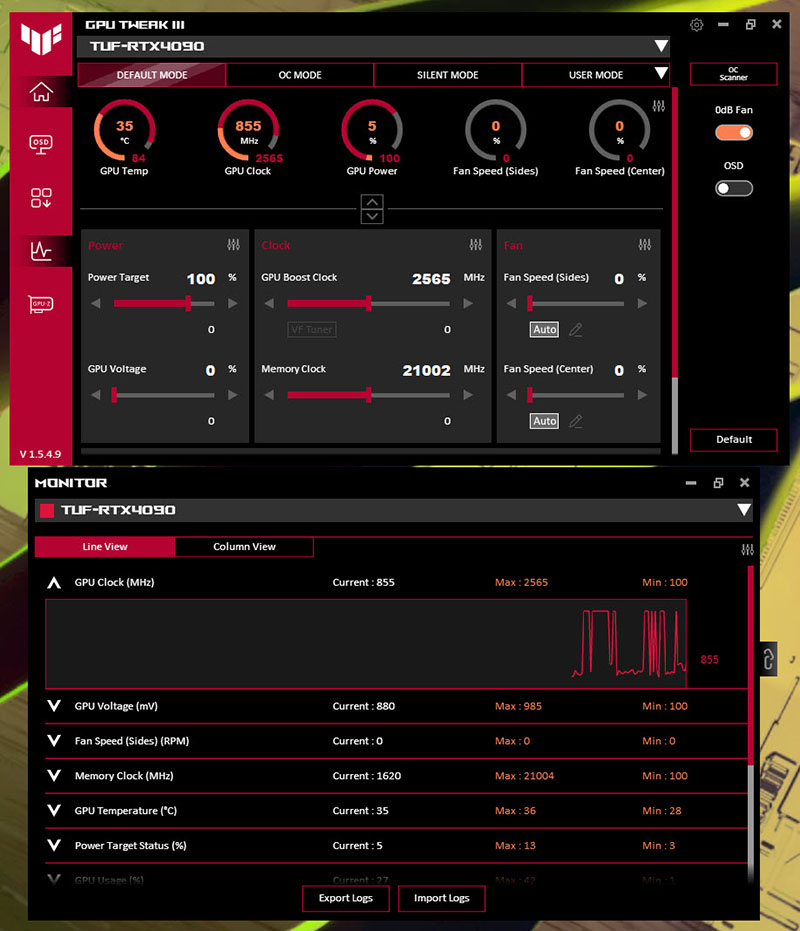
Let us move on to GPU Tweak used in this review. It is rather large and takes up a lot of screen real estate. This shows the Default settings.
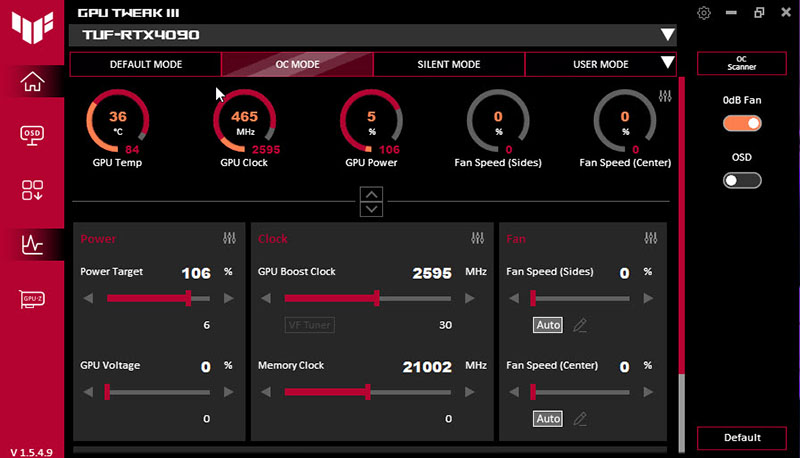
The OC button does not do a whole lot. It increases the Power Target from 100% to 106% and the GPU Boost Clock from 2565 MHz to 2595 MHz. It is hardly noticeable, to be honest. It does boost the TUF version to 2595, while the Strix version went to 2640. The default mode differed with the TUF at 2565 and the Strix at 2610. Overall the Strix version is slightly faster than the TUF.
Unless one really wants to get into overclocking this card, the sliders are there to do just that. This card is so fast that you will not get much out of doing that except for a higher power draw.
We talked about Armory Crate in the last review and this one. Some do not like that added piece of software. We happen to like it and use it often.
With Armoury Crate, you can monitor what the CPU is doing and change RGB effects. It also allows one to register your products and perform platform updates, even to the BIOS. We find this essential to keeping our system up to date.
You can see that we have a fair amount of ASUS products registered.
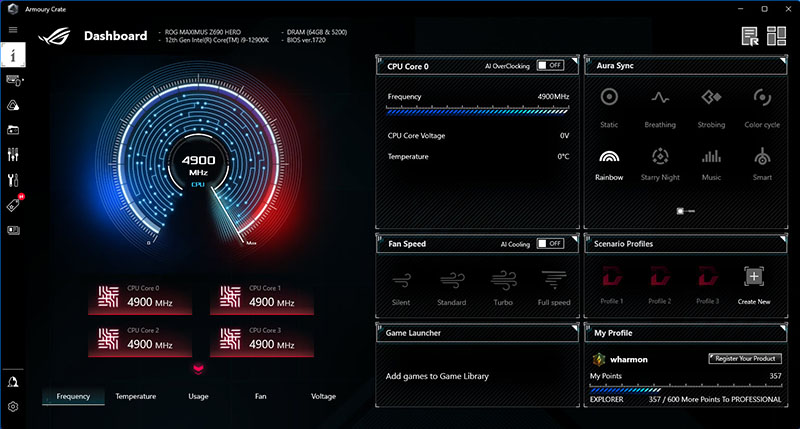
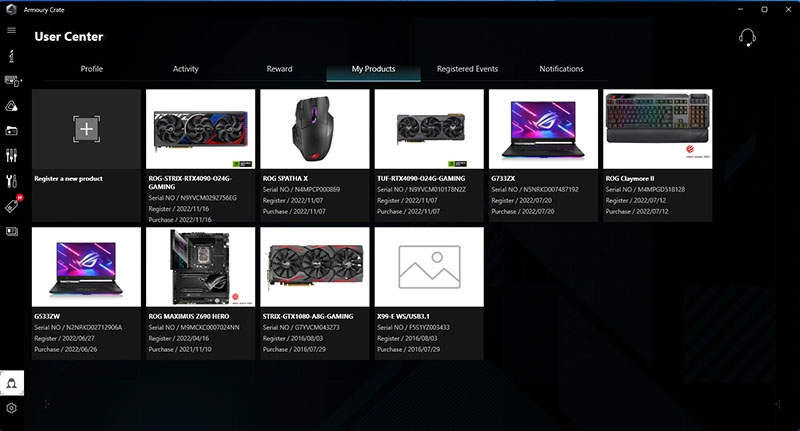
Here is the obligatory GPU-Z shot of the ASUS TUF 4090 OC:
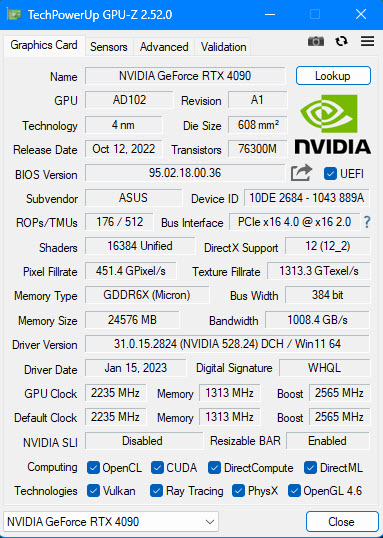
GPU-Z shows the main stats of our ASUS TUF 4090 OC.
Let us move on and start our testing with compute-related benchmarks.




Soon the PC form factor will need to change: the mobo will be installed in a slot in the nVidia GPU.